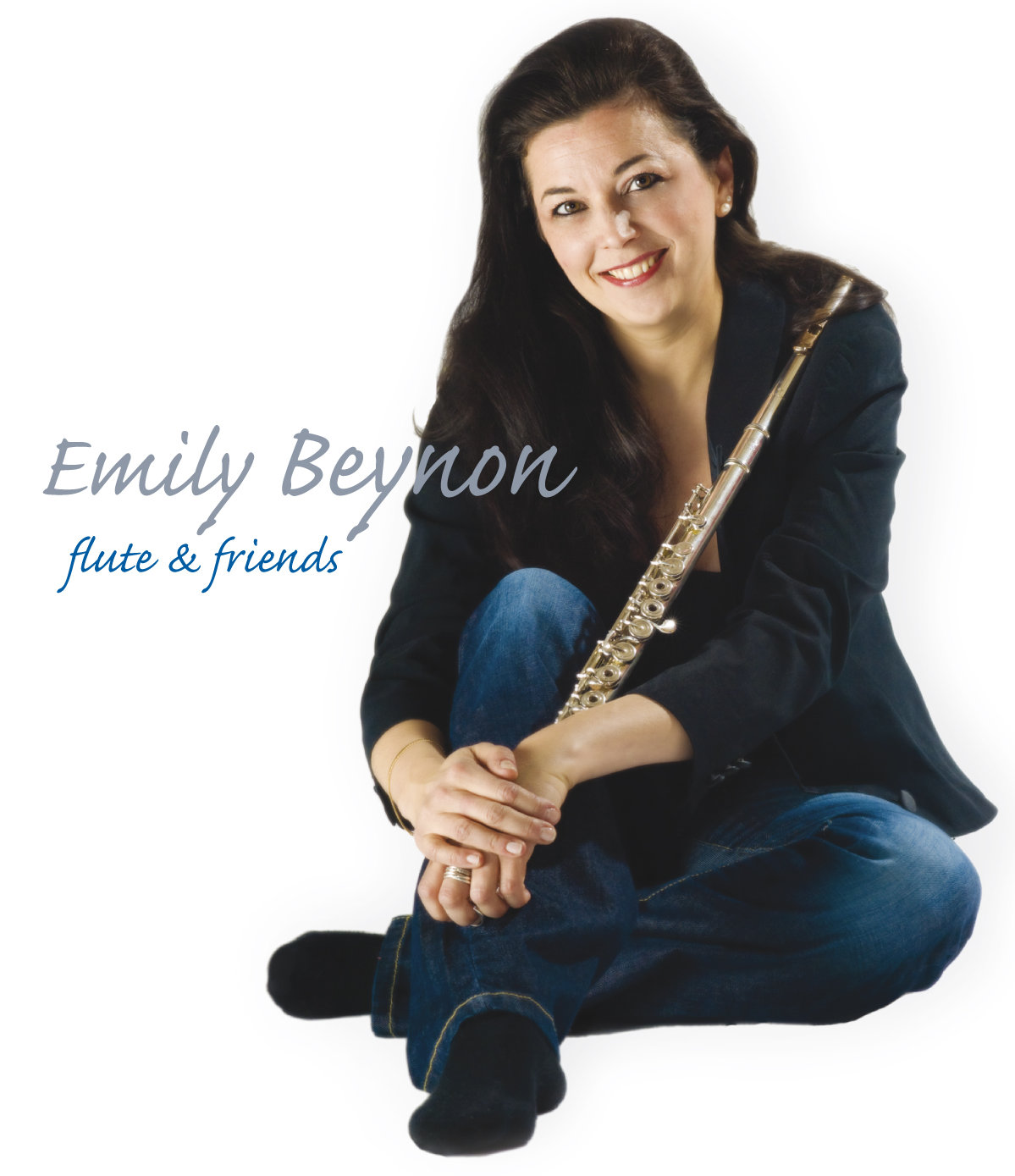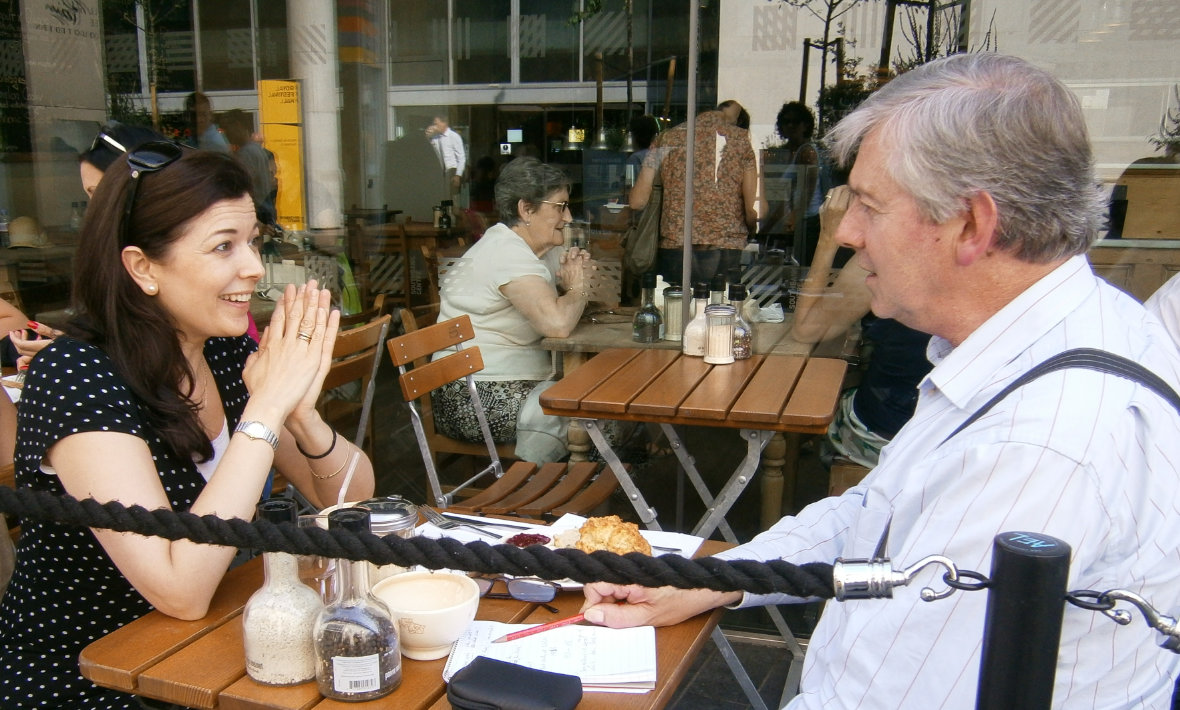Emily Beynon on Berkeley and the flute
Society patron Emily Beynon discusses Berkeley’s flute works with Christopher Daly
Emily Beynon is Principal Flute of the Royal Concertgebouw Orchestra of Amsterdam, which celebrated its 125th anniversary last year. She is an internationally established recitalist and teacher, and a superb chamber musician. In 2011 Emily co-founded the Netherlands Flute Academy. That same year she made exemplary recordings of Lennox Berkeley’s Concerto for Flute Op. 361, and of Berkeley’s orchestration of the Flute Sonata by Francis Poulenc Op. 93 pt II (1973). Last year she accepted an invitation to become a Patron of the Lennox Berkeley Society. Her schedule is extremely busy, yet between a rehearsal with pianist Andrew West and a flight home to Amsterdam she found time to talk at a café near the Royal Festival Hall on a beautiful afternoon last August.
I began by asking her about the Concerto Op. 36, and suggested that there was a lot of melodic material in it. She agreed, and said it was very different stylistically from the Sonatina for Recorder, or Flute, and Piano Op. 13 (1939). Had she found the flute part particularly difficult?
“Fairly difficult musically, including the cadenza, because it throws up more questions than it answers. This is challenging for the performer, but interesting to explore.” I put it to her that the scoring was careful not to overwhelm the solo instrument. Nevertheless, she said that in one passage, where the flute part lies in its soft low register, she had in fact followed James Galway’s example, by transposing it up an octave.

Emily’s eyes lit up at my suggestion that the Poulenc Flute Sonata had been well orchestrated. She clearly agreed, and in particular she praised the colourful wind writing. With accompanist Andrew West, she had made a recording of the original Sonata FP164 (1956-7) some years ago2, so the two versions provide an interesting comparison.
Shortly before recording the Berkeley Concerto, Emily had discovered a hand-written orchestral score of the work, and was perplexed to find some discrepancies between the flute part in this version and in the published piano reduction from which she had worked. Very small differences of pitch and dynamics were carefully considered, and with typical thoroughness she decided to make a few slight changes in the light of the newly-discovered version3. She consulted the Society at this time, and thus established our contact with her.
Turning to orchestral repertoire in general, I wondered if she had any particular favourites. She said she could not live without the Brahms symphonies.
“They have beautiful, exquisite writing for the flute. I also love the Mahler. Even a familiar orchestral work may be different each time – tempi, atmosphere – there is much for which we may rehearse and prepare, but that special ‘concert feeling’ is a unique combination of forces at that one point in time.”
As well as its busy schedule in Amsterdam and other European centres, the Concertgebouw Orchestra undertakes several overseas tours each year. In 2013 there were visits to South America, China, Japan and Australia. Emily enjoyed the people and the cultures of South America, a continent she had visited before. The audiences there, she said, are “really appreciative”.
Her sister, the harpist Catherine Beynon, also has an international career, but the two manage to meet up to give recitals together when they can. An inevitable question, therefore, was whether theirs was a particularly musical family.
“Our parents are both great music lovers; also the grandparents on both sides of the family. My mother plays the piano, and my father played the flute in his youth. My first flute was the one he had played, brought down from the attic! I played the recorder at school of course.”

The enchanting yet natural sound of the flute and harp has some lovely repertoire – for example the Mozart Concerto in C Major K299. There are fine pieces by British composers, including a sonata by Arnold Bax, and a duo by Stephen Dodgson4. Some repertoire may have involved the substitution of one or other of the two instruments. Thus the harp is a good alternative to the harpsichord. Emily especially likes to play violin music on the flute, so the Saint-Saëns Fantasia for Violin and Harp Op. 124 is a natural choice.
Where recitals with piano are concerned, she has a special affinity with Andrew West5. The two musicians met years ago through the Young Artists Trust. Emily especially admires Andrew’s creative contribution to their playing, so that they perform more as a duo than as soloist and accompanist; and because he works with singers, she senses his natural feeling for melodic line. I wondered how she selected pieces for a recital.
“A piece may be a request, or something I especially like, but there should be coherence, and we juxtapose pieces in a meaningful way. For example, we recently played the Duo for Flute and Piano by Copland, which has very sparse writing, alongside Debussy’s Prélude à l’Après-Midi.”
The two artists gave a recital in the Duke’s Hall at the Royal Academy of Music last October, under the auspices of the British Flute Society, playing music by Prokofiev, Sally Beamish6, John Woolrich and Rudolf Escher. The fact that the players work as a duo was well brought out, the performances being characterised by great discipline and togetherness, within wide expressive and dynamic ranges.
The distinguished flautist is a committed and passionate teacher, and especially wanted to say something about this vital aspect of her work. She teaches master classes internationally, and therefore must encounter considerable talent. What qualities, I wondered, were needed in order to reach the highest level with the flute?
“Most important is pure love or passion for either the music or the instrument. The sheer number of hours needed to achieve a top level would be torture without that! Also, having a desire to share a story with the audience; ideally, to be the pane of glass through which the composer communicates with the audience.”
The Netherlands Flute Academy was founded jointly with businesswoman and amateur flute player Suzanne Wolff. It caters for three groups of students – those aged 9-12, 13-18 and 19-30. The older group forms the Young International Professionals, but there are opportunities for younger pupils to meet the older ones, so that students may learn from each other. Academy events take place seasonally, and at venues that have included the Concertgebouw. Trusted colleagues are vital to the teaching programme; they include flute teachers Jeroen Bron and Wieke Karsten7, and Andrew West is official pianist for all 27 participants in the summer academy.
“I love teaching and have been lucky enough to have had some great teachers, so the Academy stems from a wish to pass on what I’ve learnt to the next generation. I also love structuring a varied programme which is intended to supplement, not replace, weekly flute lessons. We have guest teachers giving workshops on diverse subjects such as contemporary techniques, baroque playing and even baroque dance! Also jazz improvisation, podium presentation and mental training. We also invite top Dutch instrumentalists to come and play with us and inspire us.”
All too soon our conversation had to end so that Emily could catch her flight. In thanking her for a most engaging interview, I would also like to express appreciation for her prompt and enthusiastic communications by email, even if she happened to be in Beijing, or in Perth, Australia. I hope that this article will give some idea of the immense contribution Emily Beynon continues to make to the world of her chosen instrument. May I also say, on behalf of the Lennox Berkeley Society, that we are honoured now to be able to associate her name with our own.